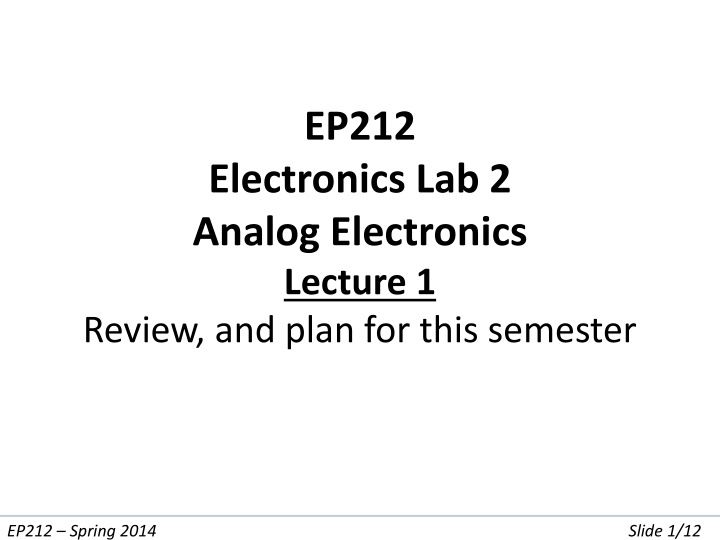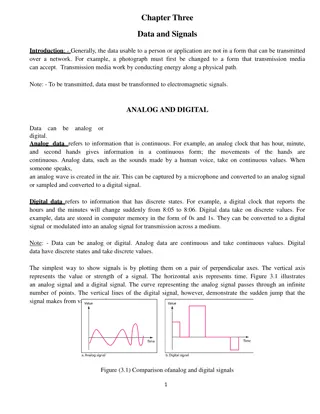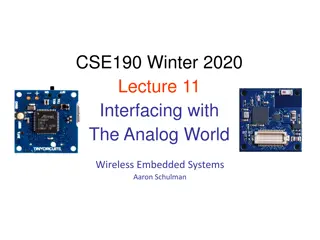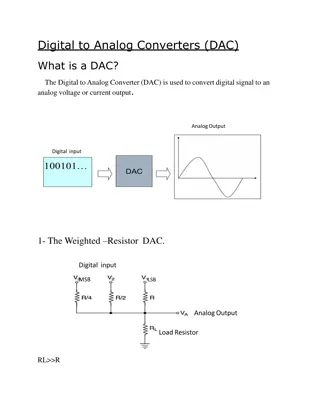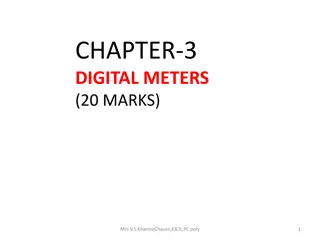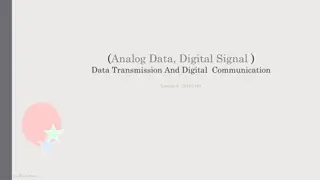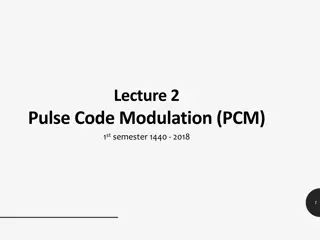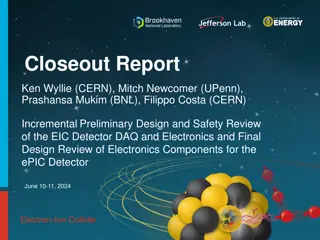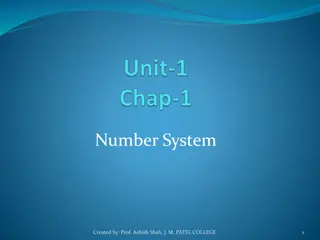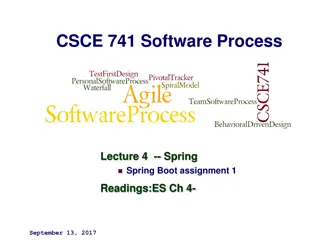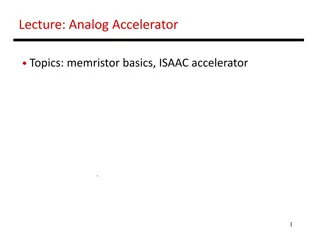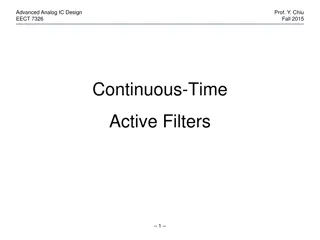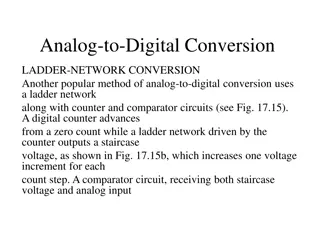Analog Electronics Review and Semester Plan for EP212 Spring 2014
This presentation reviews concepts in analog electronics, focusing on operational amplifiers, feedback, signal measurement in the presence of noise, transistor amplification, differential operation constraints, and component matching in electronics labs. The semester plan includes topics such as discrete BJT amplifier designs, digital measurement, and control systems for upcoming semesters.
Download Presentation

Please find below an Image/Link to download the presentation.
The content on the website is provided AS IS for your information and personal use only. It may not be sold, licensed, or shared on other websites without obtaining consent from the author.If you encounter any issues during the download, it is possible that the publisher has removed the file from their server.
You are allowed to download the files provided on this website for personal or commercial use, subject to the condition that they are used lawfully. All files are the property of their respective owners.
The content on the website is provided AS IS for your information and personal use only. It may not be sold, licensed, or shared on other websites without obtaining consent from the author.
E N D
Presentation Transcript
EP212 Electronics Lab 2 Analog Electronics Lecture 1 Review, and plan for this semester EP212 Spring 2014 Slide 1/12
Electronics for Physicists the big picture Amplifier Measurement Physical System Large Electrical signal Small Electrical signal Electronics Lab 1 (EP215) last semester Basic concepts (grounds, signal measurements) Discrete BJT Amplifier designs (Voltage CE, Current Follower) Electronics Lab 2 (EP212) this semester - Operational Amplifiers (opamps) - Feedback - Signal measurement in presence of noise Electronics Lab 3+4 (EP315 + EP317) next semester - Digital measurement and control systems EP212 Spring 2014 Slide 2/12
Recall BJT transistors from Electronics Lab -1 3 terminal ACTIVE device IC = IB IE ~ IC IB ~ A ; IC ~ mA re = 25mV / IC Symbol with voltages EP212 Spring 2014 Slide 3/12
How does the transistor amplify? ic VCC RC vout BJT RC vin vout ie RE vin RE vout = -icRC vin = ieRE Gain = -RC/RE EP212 Spring 2014 Slide 4/12
How do TWO transistors work? VCC VCC RC RC vout + vout + vin vin RE RE Note: Biasing details not shown EP212 Spring 2014 Slide 5/12
Differential signals are GOOD vin+ vout+ t Gain= -3 vin t Gain= -3 vout Gain is still -3, but each of vin+ and vin need half input, and vout+ - vout has double swing vin+- vin t EP212 Spring 2014 Slide 6/12
What are the constraints of differential operation? Big advantage: Can DC-couple vin =(v+ - v-) at input VCC VCC RC RC + vout vout + vin vin RE RE Transistors must be exactly matched Resistors must be exactly matched Wires must be exactly matched Later stages (V I) must be exactly matched EP212 Spring 2014 Slide 7/12
Bureau of component matching OpAmp integrates precision matched actives+passives in one IC Biasing etc Output Stage Input Stage EP212 Spring 2014 Slide 8/12
Your friend for Spring 2014 LM741 OpAmp IC +12V -12V Close to zero input current (high input impedance) Current drive output (low output impedance) Close to infinite open loop gain OPAMP DC coupled high gain amplifier EP212 Spring 2014 Slide 9/12
Preparation for Lab 1 Treat your friend with love and affection! Don t bend the IC pins when inserting into breadboard 5 6 7 8 Remember the notch pin numbers start at the notch You must always use dual voltage supply +VCC(to pin 7) and VCC(to pin 4) |VCC| < 20V 4 +VCC 3 2 1 -VCC CORRECT: Each pin has a separate breadboard trace. +VCC and VCC are connected along the edge traces WRONG ! Pins 1-4 and 5-8 are shorted to each other EP212 Spring 2014 Slide 10/12
Course Reference The OpAmp cookbook by Walt Jung Available open-source online from many sites (eg) Analog Devices Analog Dialogue EP212 Spring 2014 Slide 11/12
